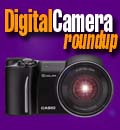 In my column in the December 1998 issue of this magazine I considered the pros and cons of trusting digital cameras enough to take one with me on a trip to Japan. Since I knew next to nothing about Japan, I wondered whether I'd find compatible power outlets, or places where I could buy more Compact Flash cards. I also wondered which camera I should take along, digital or film. Well, here is what happened.
In my column in the December 1998 issue of this magazine I considered the pros and cons of trusting digital cameras enough to take one with me on a trip to Japan. Since I knew next to nothing about Japan, I wondered whether I'd find compatible power outlets, or places where I could buy more Compact Flash cards. I also wondered which camera I should take along, digital or film. Well, here is what happened.
The trip, hosted by Sharp, turned out to be the experience of a lifetime. Our hosts went out of the way to give us a most informative overview of Sharp's latest technologies, including their amazing variety of LCDs of all sizes. And yes, I did decide to take a digital camera with me. I picked the Nikon CoolPix 900 over the Olympus D-340L. The deciding factor was that the Nikon had a zoom lens and the Olympus didn't.
So what happened? Did any of my many fears come true? Did the CoolPix run out of batteries before I even made it past immigrations in Osaka? Was my A/C adapter useless? Did I run out of digital "film"?
The answers are no, no, and no. By and large, the experience with the Nikon Cool Pix 900 that accompanied me on my trip to Japan was almost entirely positive. I filled up a 16 MB Lexar CompactFlash card with 45 1280 x 960 images in perhaps four days, then had to resort to the additional three CompactFlash cards I had taken along, an 8MB and two 4MBs. For the most part, I used the Nikon's "standard" setting which has a resolution of 1280 x 960 and medium compression. Towards the end, I switched to lower resolution to squeeze in a few more pictures. Using that mix of resolution settings I managed to get about 120 pictures out of the total of 32MB on my cards. By and large, storage wasn't a big problem. Though, of course, there's never enough.
One of the primary concerns I had had was battery life. Before I left for Japan, I loaded the CoolPix with a brand new set of (expensive) lithium AAs, but then forget to bring along any spares and feared that I might have to hunt down lithium AAs every second day. That didn't happen. Though I used the zoom and the LCD display liberally, the batteries held up for the entire eight day trip. In fact, they finally died just as we were landing back home in Sacramento. Perfect timing.
Initially, my plan had been to take as many pictures as I could, then transfer them into my IBM ThinkPad 765L every night, using the PC Card CompactFlash adapter. Unfortunately, the ThinkPad was unable to read the adapter due to some arcane PC Card driver problems that popped up when I upgraded to Windows 98. As a result, my storage capacity was limited to the cards I'd brought with me, and I took images much more selectively and deliberately. I paced myself well, filling the last card on the last day of the trip. However, the other reason why my four "film" cards lasted that long was because it's much more difficult to quickly snap away with a digital camera than with a conventional point and shoot.
On the plus side, thanks to the LCD and the playback function, I always knew what my pictures looked like. I didn't have to wait for rolls of film to be developed back home. It allowed me to delete bad pictures on the spot. It turned out, though, that some of the pictures that had looked great on the camera's color LCD were, in fact, out of focus or had other flaws when viewed on the much larger computer screen. Had I been able to transfer pictures to my notebook computer, I would have been able to see them, but alas...
As for the Nikon itself, I found that I really liked the twist body design of the Cool Pix 900 which allowed me to take pictures much more discretely than with a one box camera (an important consideration in Japan). On the negative side, the camera was too large to comfortably (or even uncomfortably) fit into any pocket As a result, taking the 900 places was always a task. The LCD screen, while bright and sharp, is almost impossible to see in daylight. What the camera needs is one of Sharp's new High Reflective-TFTs that you can see both inside and outside. I was also amazed to find that what I saw on the LCD wasn't exactly what the CoolPix ended up recording.
The most limiting factor was the time it took the camera to "boot." I had to wait at least six seconds until the 900 was ready, and by that time it was often too late. And even when the camera was ready, it still didn't always take the picture when I pushed the button. Depending on the situation the 900 took two or three seconds to make up its electronic mind, and sometimes decided not take the shot at all. That is a frustrating limitation. Equally frustration was the eternity it took to switch from recording to playback mode. That function should be much, much faster. Finally, I found the user interface lacking. I constantly fumbled with the mode switch, and my fingers didn't find the zoom intuitively. The software menu and the controls are confusing and unnecessarily cumbersome.
Nonetheless, despite those drawbacks I found that I used the Nikon every day whereas I didn't use the Kodak point and shoot I had taken with me as a backup at all. Almost all pictures came out great. I actually ended up buying the camera from Nikon with my own money.








